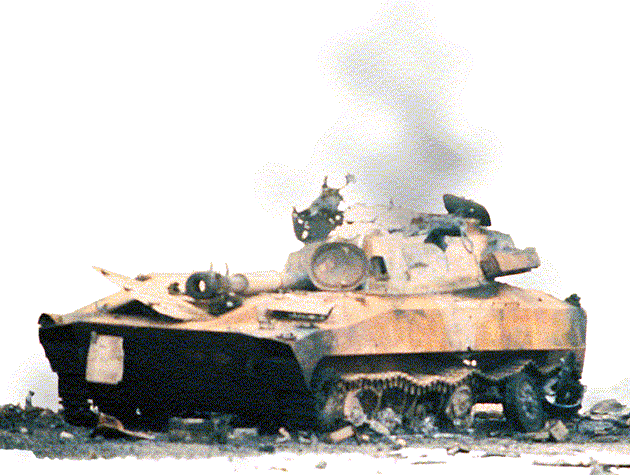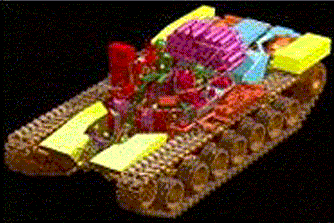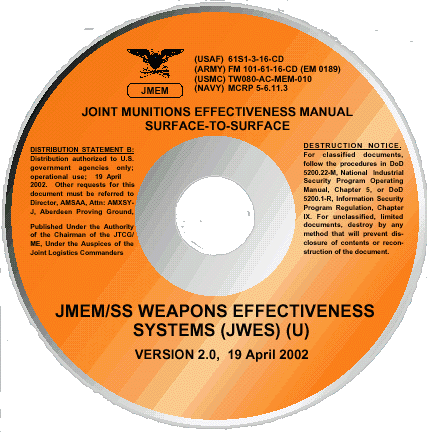In 1963, an
Army-Air Force panel known as the Close Air Support Board issued a report
calling attention to large gaps and gross inaccuracies in data then published on
air-to-surface non-nuclear munitions. To remedy these inconsistencies, the board
recommended production of a joint service publication containing a comprehensive
list of targets with corresponding data on the effectiveness of aerially
delivered munitions suitable for defeating those targets. Responding to this
challenge, the Joint Chiefs of Staff requested that a joint service working
group correct the data deficiencies and prepare a Joint Munitions Effectiveness
Manual (JMEM) for air-to-surface weapons. The Army was tasked to be the lead
service. The Chairman of the JTCG/ME established an ad hoc group of military and
civilian scientists scattered through the Defense Department. The group
developed the first standardized methodology for evaluating weapons, and this
product was a coordination draft of a multi-service manual entitled Joint
Munitions Effectiveness Manual for Air-Delivered Non-nuclear Weapons. This
manual was accepted not only by the scientists and military professionals but
also by the Secretary of Defense. The latter requested that a similar approach
be applied to surface-to-surface weapons.

In the Fall of 1965 the original ad hoc group was given formal status as the
Joint Technical Coordinating Group for Munitions Effectiveness (JTCG/ME) by the
Joint Logistics Commanders. By mid-1966, the JTCG/ME was supported by three
working groups: Target Vulnerability, Chemical and Biological, and the original
Air-to-Surface (JMEM/AS) Group. These working groups, in turn, controlled the
activities of subgroups created and tailored for specific aspects of the parent
group's mission. The JMEM/AS had subgroups for weapon characteristics, delivery
accuracy, flame and incendiary effects, methodology, and publications. A
separate Basic Manual Working Group, chaired by the Defense Intelligence Agency,
was established to maintain the Weapon Effectiveness, Selection, and
Requirements - Basic JMEM/AS Manual.
By January 1967, JTCG/ME
brought in a JMEM Production Contractor to provide support for the development
and production of technical handbooks, JMEM, special reports, and related
publications. By 1967, the JTCG/ME was concerned not only with deriving or
validating data by tests, experiments, and mathematical models, but also from
direct inputs of data from the battlefield. The JTCG/ME Wound Data and Munitions
Effectiveness Team gathered wound data from Southeast Asia (SEA). Later, the
team expanded the scope of its battlefield collection to include materiel and
sent specialized teams to SEA under an effort labeled BDARP-Battle Damage
Assessment and Reporting Program. These data are currently stored in the
Survivability/Vulnerability Information Analysis Center (SURVIAC) at
Wright-Patterson AFB and are available for study and research by DoD agencies
and contractors.

In September 1967,
a separate major group - JMEM/SS - was created to examine and produce data on
surface-to-surface munitions. Manuals containing data on individual
surface-to-surface weapons were published and revised as new targets or
munitions were developed. To complete the weapon-target interface the JTCG/ME
established the Anti-air Working Group in 1976. Additionally, a Red-on-Blue
Working Group was formed in 1977 to address the effectiveness of Red munitions
on Blue targets. A Special Operations Working Group, initiated in 1983, provided
target vulnerability and weapon effectiveness studies for Special Forces. In 1994, the JTCG/ME was reorganized with four major working groups:
Air-to-Surface, Surface-to-Surface, Anti-Air, and Vulnerability (including
Special Operations) to cover the spectrum of weapon effects issues. In addition,
each working group is supported by a formally chartered Operational Users
Working Group (OUWG). The Central Office is the focal point for all JTCG/ME
efforts. They coordinate the efforts of the working groups while the execution
of those efforts is the responsibility of the working group chairmen. By May
1999, the Office of the Secretary of Defense (OSD) revised DoD Directive 5000.2R to
require the procuring agency to provide weapon effectiveness data for use in
JMEM for weapons in the acquisition process prior to their achieving initial
operational capability. OSD also required that these data be prepared using
methodology coordinated with the JTCG/ME.
The principal products of
the JTCG/ME are known as the Joint Munitions Effectiveness Manuals, or JMEM. The
JMEM were developed to provide a set of data and methodologies that would permit
a standardized comparison of weapon effectiveness across all service
communities. For example, these data and methodologies should enable a
Department of Defense planner in the Pentagon, a Navy weapons officer onboard a
ship, and an Air Force targeting specialist in Korea, to arrive at similar
estimates for the effectiveness of a particular weapon employed under specified
conditions. This use of standardized data and methodologies facilitates a
wide range of activities beyond the planning and execution of operations;
activities such as weapon development and procurement, management of stockpile
levels, and pre-positioning of war-loads. Historically JMEM were sets of orange
covered manuals that provided data and methodologies for weaponeering. Over time
these manuals were supplemented by computer programs to ease the computational
burden on the user, to derive results faster, and to allow more realistic models
to be incorporated. In recent years the JMEM have evolved into CD-ROM products,
the first and most widely used is for the Air-to-Surface community and is known
as the Joint Air-to-surface Weaponeering System, or JAWS. Subsequently the SS
Working Group produced a functionally similar product known as the JMEM/SS
Weapons Effectiveness System, or JWES. Beginning in 2007, all JMEM weapon
effectiveness products are integrated into a single program - The JMEM
Weaponeering System - or JWS. For the first time, the system is target oriented
allowing users to determine the effectiveness of weapon systems against a
specified target irrespective of the weapon delivery mode.
By May 1999, the Office of
the Secretary of Defense (OSD) revised DoD Directive 5000.2R to
require the procuring agency to provide weapon effectiveness data for use in
JMEM for weapons in the acquisition process prior to their achieving initial
operational capability. OSD also required that these data be prepared using
methodology coordinated with the JTCG/ME.
The resources to operate the
program are distributed to the JTCG/ME directly from the Director of
Operational Test and Evaluation, Office of the Secretary of Defense. Chartered
by the Joint Logistics Commanders with two-star or civilian-equivalent Offices
of Primary Responsibility (OPR), the JTCG/ME is guided by a steering committee
composed of members from each of the services, the Joint Chiefs of Staff (J-8),
the Defense Intelligence Agency, and the Defense Threat Reduction Agency. The
Army continues as DoD Executive Agent, as it had been with the original ad hoc
group, and the Director of the U.S. Army Materiel Systems Analysis Activity at
the Aberdeen Proving Ground, Maryland, presides. The committee is composed of
civilian and military weapon/munitions experts throughout the defense department
to ensure objective, scientific guidance in the development and employment of
non-nuclear munitions.
Of greatest importance to
the targeting process, JMEM data and methodologies are crucial for the
development of force employment options contained in the Courses of Action (COA)
nominations developed for theater commanders, and the resulting execution
tasking orders for tactical units. The JMEM include: detailed data on the
physical characteristics and performance of weapons and weapon systems;
descriptions of the mathematical methodologies that employ these data to
generate effectiveness estimates; software that permit users to calculate
effectiveness estimates; and, pre-calculated weapon effectiveness estimates.



